- Home
- Best Pet for Me List
- Basilisks
Basilisks
There are several different types of basilisks that people have for pets. Green Basilisks are the most popular. Basilisks come from tropical climates. They like to climb and swim so they need a lot of space in their cage for that. They require some extra care, so you need to be experienced with reptiles to properly take care of a basilisk.
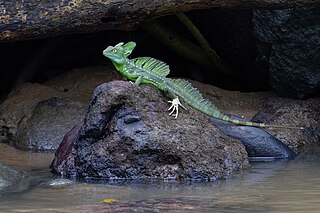 https://commons.wikimedia.org/wiki/File:Green_Basilisk.jpg
https://commons.wikimedia.org/wiki/File:Green_Basilisk.jpgDangerous?
Basilisks will rarely bite or scratch. They are not dangerous. They do not have venom.
Like People?
While they can be trained to tolerate handling, they really like to be left alone. Any handling should be done gently and with care. Handling should be kept to a minimum and you can enjoy watching them in their enclosure.
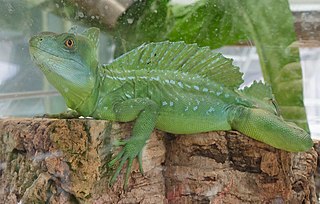 https://commons.wikimedia.org/wiki/File:Plumed_basilisk.1.jpg
https://commons.wikimedia.org/wiki/File:Plumed_basilisk.1.jpgSleep
They sleep at night. In the wild they sleep in trees, so you will want lots of branches in your basilisk enclosure for them to make a bedroom.
Size
They usually grow to be about 2-3 feet long, with females being smaller than males
Temperature and Humidity
The temperature in the enclosure should be in the 80s with a basking spot where it is 95 degrees F. The nighttime temperature should not be below 75 degrees F.
Being from the rainforest, they like it humid. Humidity should be 55-75%. Misting twice a day, a waterfall in the enclosure, and a moist substrate can all help to keep the humidity up.
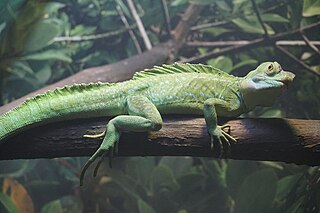 https://commons.wikimedia.org/wiki/File:Milwaukee_Public_Museum_March_2023_24_(Survival_of_the_Slowest--green_basilisk).jpg
https://commons.wikimedia.org/wiki/File:Milwaukee_Public_Museum_March_2023_24_(Survival_of_the_Slowest--green_basilisk).jpgHabitat
They need a lot of space in their enclosure. They like to climb and swim, so they need areas for both of these activities. You will need a cage that is at least 3 feet long by 3 feet wide and 4 feet tall. About half of the bottom of the cage should be a pool that is deep enough for them to submerge themselves. They like to be in the water and can hold their breath for quite a while.
They should have lighting to simulate a 12-14 hour day. They also need supplementing with UV lights.
There should be lots of branches for them to climb on and plants for them to hide in. They will be relaxed in a plant-dense environment and the plants can help with the humidity. It’s really important for them to be able to hide if they want to, so you’ll need lots of caves. Also, provide them with ledges to hang out on.
The substrate should be something that helps with the moisture. Reptile soil, coconut coir, and peat moss are all good choices. Just make sure the substrate has no pesticides in it.
You should have only one basilisk in a cage. They like to be alone and will fight if there are other basilisks around.
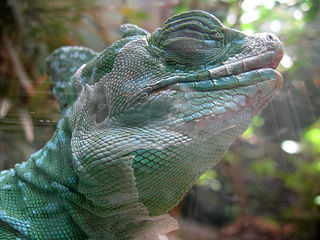 https://commons.wikimedia.org/wiki/File:Basilisk_Headshot.JPG
https://commons.wikimedia.org/wiki/File:Basilisk_Headshot.JPGDiet
Adult basilisks are omnivores. They should have a salad every day and some insects a few times a week. The insects should be dusted with calcium and vitamin D.
Lifespan and Health
Basilisks can live 10-15 years. They have similar health concerns that other reptiles have - metabolic bone disease, parasites, and respiratory issues. A basilisk that is upset or bored might bang its nose against the glass of the enclosure. Sometimes they can injure their nose from the banging. Make sure your basilisk has all the stimulation, enrichment, ability to hide if it wants, and comfort that it needs. It is better to prevent nose banging than to deal with the after-effects of it.
To find out about other reptile pets and pets of other species, return to the Best Pet For Me List.



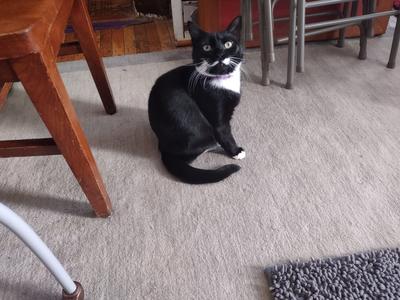


New! Comments
Have your say about what you just read! Leave me a comment in the box below.